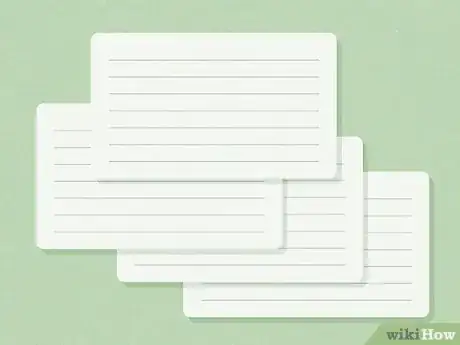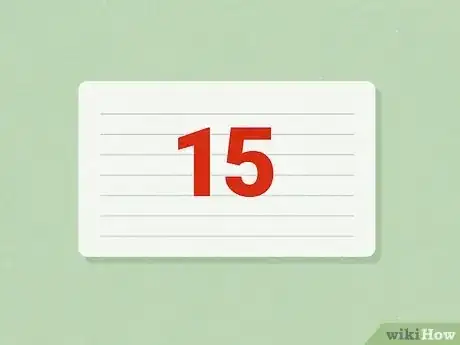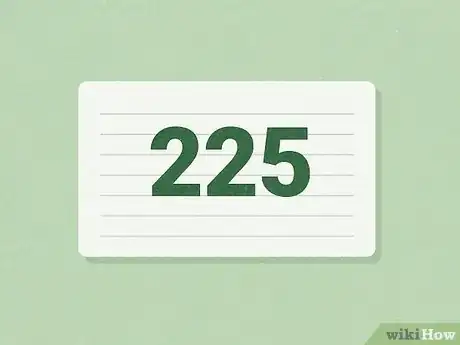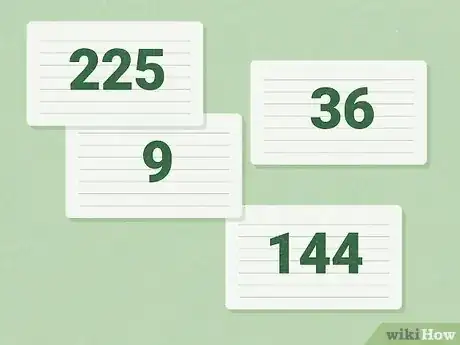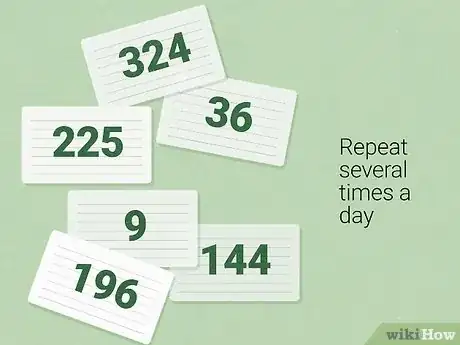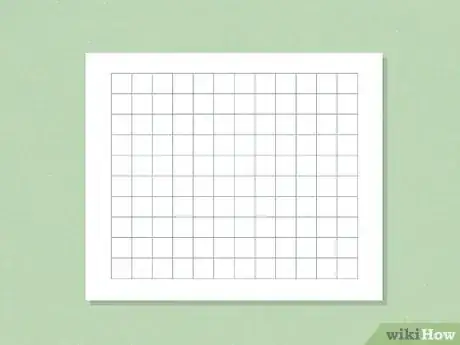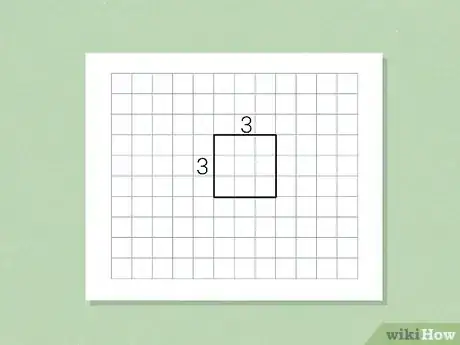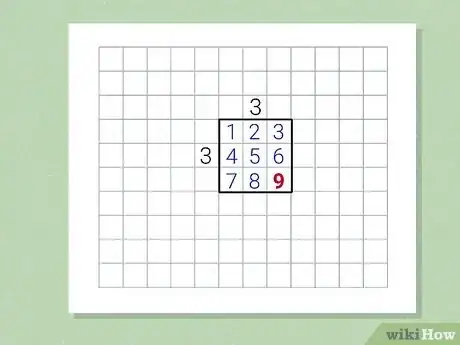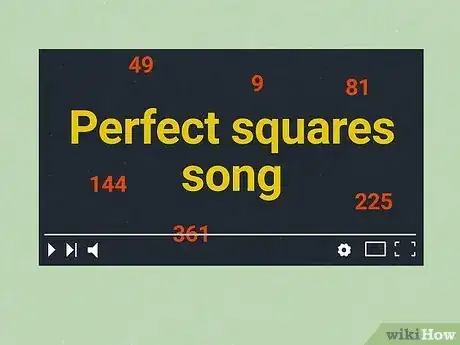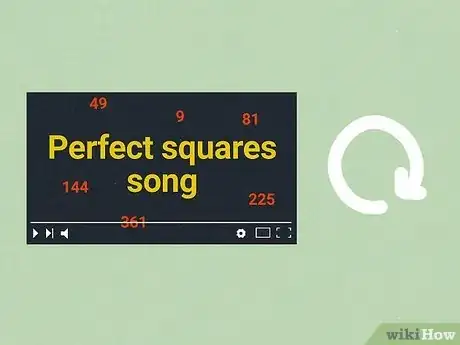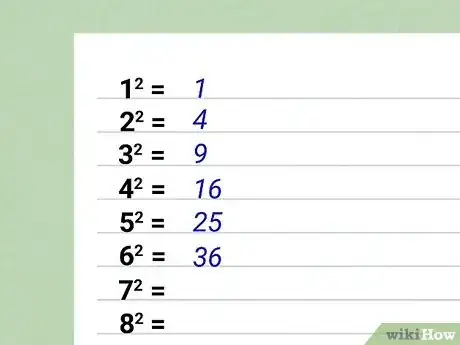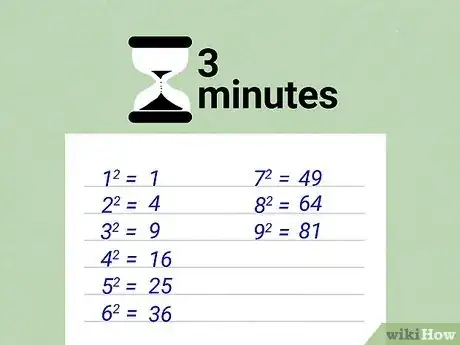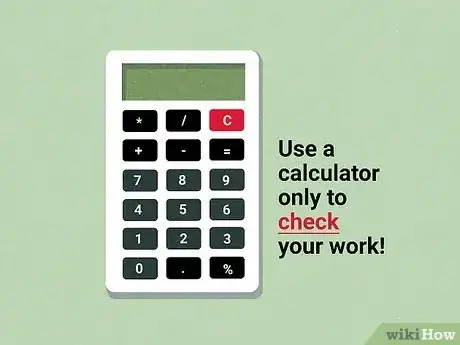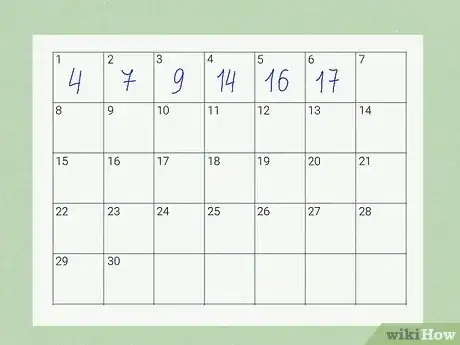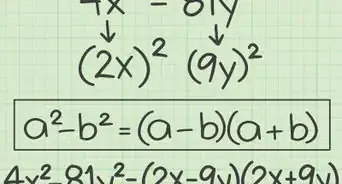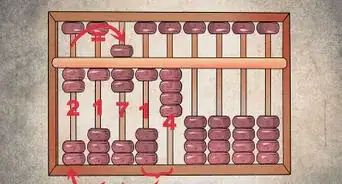X
wikiHow is a “wiki,” similar to Wikipedia, which means that many of our articles are co-written by multiple authors. To create this article, 21 people, some anonymous, worked to edit and improve it over time.
This article has been viewed 67,614 times.
Learn more...
Memorizing perfect squares in math can be tough to do, but you will be glad once you did. Knowing your perfect squares can make it easier to compute larger numbers without using a calculator and save you valuable time on tests and quizzes. The key is to figure out a method that works best for you and practice again and again.
Steps
Method 1
Method 1 of 4:
Memorizing with Flashcards
-
1Get a stack of index cards. You will need one for as many perfect squares you want to memorize. Start simple with 10 cards, then add another 10 as your memory improves.
-
2Write the root numbers on the front of the card. Make the numbers large enough to read from a few feet away. This will be the side of the card you are shown.Advertisement
-
3Write the squared number on the back of the card. This will be the answer of the card. Make sure the card is thick enough that you can’t see the answers through the paper.
-
4Go through the cards. Look at the root number and state the corresponding squared number.
- You can do this alone or get a friend to go through the cards with you. Try and get through the deck as quickly as possible.
-
5Repeat. Go through your flashcards a few times a day and you will getting through them gets easier every time. Eventually you will be able to recite your perfect squares without the use of the flashcards at all.
Advertisement
Method 2
Method 2 of 4:
Learning With Visual Aids
-
1Locate a piece of graph paper. Graph paper has printed lines that appear vertically and horizontally across the page. The result is that the page looks like a grid with many boxes on the page.
- Solving the perfect squares by using shapes can help you picture the problem visually and further your understanding. If you struggle with working with numbers on a page, you might find this method is more helpful to train your brain.
-
2Trace a box around the existing lines of the graph paper. Make a box that goes around several boxes on the graph paper. Just make sure the box is square in shape, with an equal number of grids on each side. Write the number of graph squares of any given side above the box you've traced. This will be the root number you are going to square.
- For example, draw a box that is 3 squares long by 3 squares wide.
-
3Number the squares of the graph paper inside of the box you have drawn. Number from left to right, then top to bottom. When you have filled all the squares, you have your answer. The highest number is the square of your root number.[1]
- Number all the boxes in your 3-by-3 box shape. The highest number will be 9. So, 3²=9.
Advertisement
Method 3
Method 3 of 4:
Remembering with a Mnemonic Trick
-
1Learn a song to memorize the perfect squares.[2] There are a number of songs that can be found online, or make a fun project of making up your own. If you find a way to recite the squares that is memorable to you then it will make memorizing the squares much easier.
-
2Sing the song a few times. Pay attention to the numbers. Try singing along without looking at the numbers. Recite them from memory instead.
-
3Write the perfect squares on paper. Think about the song in your head, but write the numbers on paper. You will be surprised to see how easy it is to get the song stuck in your head, and as a result, the answers.
Advertisement
Method 4
Method 4 of 4:
Testing Yourself
-
1Test your memory by seeing how many square numbers you can write down in three minutes.
-
2Use a calculator only to check your work. It may give you the right answer, but no insight. Besides, with practice you should be able to square a 2 digit number in your head more quickly than you can type it into a calculator.
-
3Track your progress. Keep a record of how many perfect squares you could remember each day. You should notice a steady improvement over time.
-
4Race a friend. See who can write the perfect squares up to 20 the fastest. You can do this with as many friends as you like. Competition will help to keep yourself motivated to improve your knowledge and math skills. If they are doing better than you, you might be able to get some insight on what methods have worked for them.
Advertisement
Community Q&A
-
QuestionHow can I memorize them all in 2 days?
 Community AnswerLook at the pattern. 1, 4, 9, 16, 25, 36, 49, etc. 1+3 is four, 4+5 is nine, 9+7 is 16. The second difference is 2. Or, in easier terms, you add two to what you're adding, every square. 3+2 is 5, 5+2 is 7, 7+2 is 9. See the pattern?
Community AnswerLook at the pattern. 1, 4, 9, 16, 25, 36, 49, etc. 1+3 is four, 4+5 is nine, 9+7 is 16. The second difference is 2. Or, in easier terms, you add two to what you're adding, every square. 3+2 is 5, 5+2 is 7, 7+2 is 9. See the pattern? -
QuestionWhat are the patterns of perfect squares?
 DonaganTop AnswererThere are no patterns other than the obvious: the square roots of successive perfect squares are consecutive integers.
DonaganTop AnswererThere are no patterns other than the obvious: the square roots of successive perfect squares are consecutive integers. -
QuestionWhat if I need to learn up to 25 tonight?
 Community AnswerUnderstand the patterns for knowing perfect squares. This will help you learn them.
Community AnswerUnderstand the patterns for knowing perfect squares. This will help you learn them.
Advertisement
References
About This Article
Advertisement
